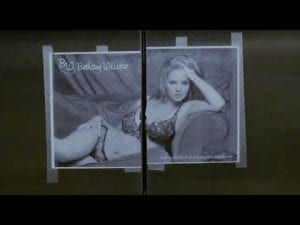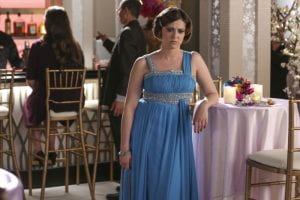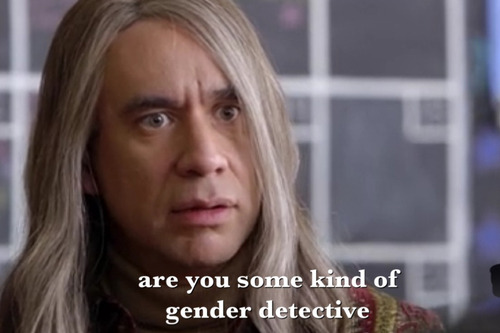Even though “Fresh off the Boat” is written about Eddie Huang’s life, I believe that his mother is actually the main character. Most of the show’s plots are centered around some conflict related to her, or about some fear of her. So for this gender analysis blog, let’s take a look at the real main character of “Fresh off the Boat” – Jessica Huang.
There isn’t too much of a gender spread on “Fresh off the Boat” – a majority of the main characters are male, except for Jessica and Louis’s mother, Grandma Huang. Jessica is a house-wife turned real estate agent, but don’t let that fool you. She is far from a typical TV housewife – she is the matriarch of the Huang family. The entire family (except for Grandma Huang) lives in fear of her, closely following the boundaries and rules that she has set. Jessica is also a very powerful and capable character, frequently shown as naturally good at many skills and a hard negotiator. In spite of her toughness, the show also demonstrates that she is capable of putting her tough love aside to show warmth to her family. Her decisions and actions are the primary fuel for the show’s plots. So “Fresh off the Boat” did a great job in representing Jessica as a powerful female, but what about everyone else?
In terms of gender, there is little active representation beyond Jessica. The show only portrays males and females, and outside of Jessica, a majority of females depicted are the rather ditsy women that share the neighborhood. However, “Fresh off the Boat” shines in terms of merging race and gender. It’s the first ABC show to depict an Asian family as its lead, and while it is a Western stereotype that Asian women are quiet and submissive, Fresh off the Boat went out of its way to ensure that it would not contribute to this image in any form. Its lead female is respected by everyone, both in and out of her family, and the only person she somewhat fears is her mother-in-law. Thus, even though “Fresh off the Boat doesn’t extend its arms into many other representational axes, it did a fantastic job in what it did choose to represent. It broke stereotypes and created one of the most iconic families to currently exist on ABC, and showed that being a housewife is anything but a sign of weakness or incapability.

It was very early in the show, but this scene is a perfect demonstration of how Jessica gets stuff done.















